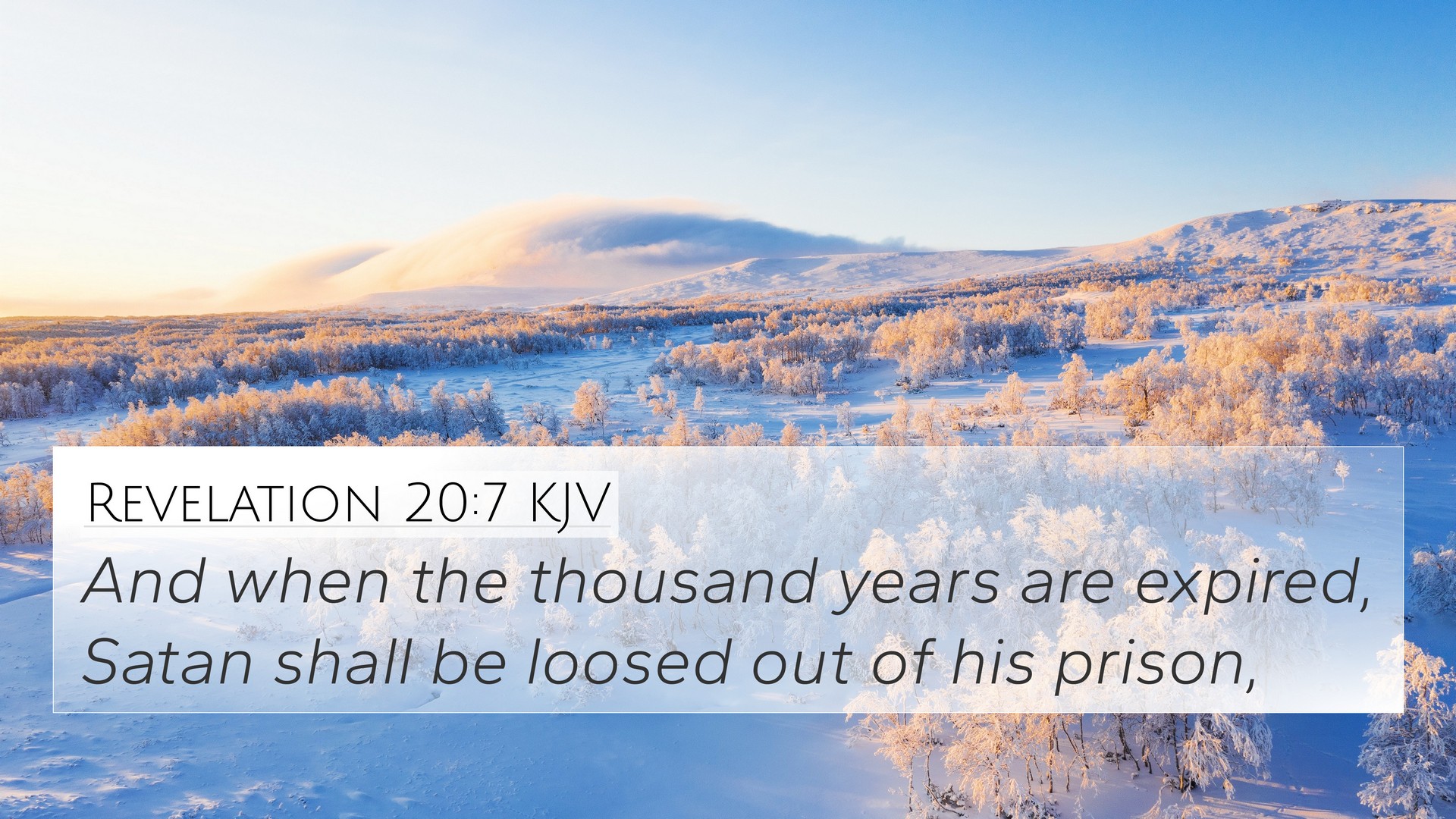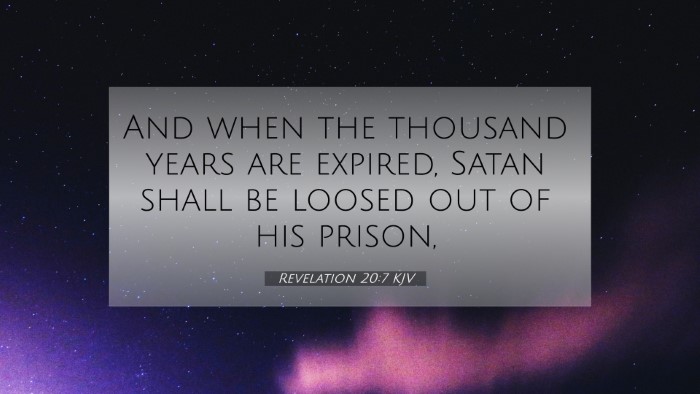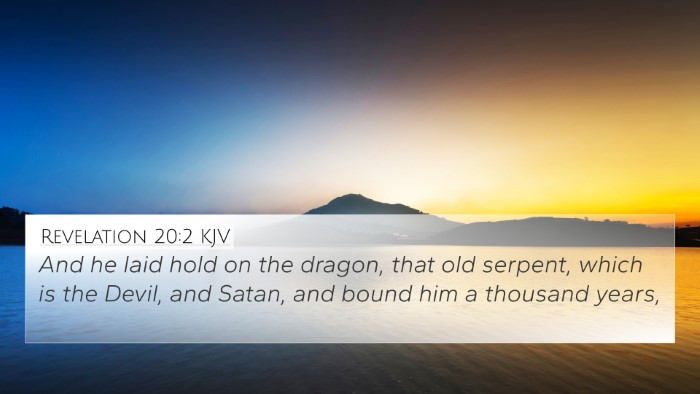Understanding Revelation 20:7
Revelation 20:7 states: "And when the thousand years are expired, Satan shall be loosed out of his prison." This verse signals a pivotal moment in the eschatological timeline where Satan is released after a prolonged period of restraint. The implications of this event serve as a significant focal point for many biblical interpretations.
Summary of Meaning
The release of Satan signifies not only a testing of the faithful but also a fulfillment of prophetic timelines established in scripture. Insights from prominent public domain commentaries shed light on the transition from the millennium to a climactic confrontation between good and evil.
Commentary Insights
Matthew Henry's Commentary
Henry emphasizes that the end of the thousand years signifies the completion of God's plan in history. He observes this moment as a test for those who had been under Christ's reign, reflecting God's ultimate sovereignty over evil. The release of Satan indicates a final showdown where the faithfulness of the saints can be demonstrated, while also showcasing the unrestrained wickedness of Satan.
Albert Barnes' Notes
Barnes elaborates on the concept of 'a thousand years' as a symbolic duration representing the time of Christ's reign. His commentary suggests that the loosing of Satan is to allow for a final conflict between good's enduring reign and evil's resurgence. He also connects this to the broader narrative of redemption, underscoring the anticipation of heavenly rewards for those who remain steadfast.
Adam Clarke's Commentary
Clarke discusses the nature of this imprisonment and subsequent release, interpreting it as a divine allowance of evil to reemerge for a short time. He posits that this moment should serve as a warning to believers regarding the persistent nature of sin and the need for vigilance. The temptation of the saints at the end of the millennium serves to highlight human reliance on divine grace.
Bible Cross-References for Revelation 20:7
- Ezekiel 38:22-23: God's judgment against Gog and Magog, which parallels the final conflict anticipated in Revelation.
- Matthew 25:41: Jesus speaks of eternal fire prepared for the devil and his angels, highlighting the end of Satan's power.
- 2 Peter 2:4: Reference to God’s judgment upon angels that sinned, connecting to the theme of divine retribution.
- 1 Corinthians 15:24-25: Discusses Christ's reign and the eventual destruction of all enemies, reinforcing the culmination of victory over Satan.
- Job 1:7: Satan's role in the heavenly court, illustrating his ongoing influence and opposition.
- Revelation 2:10: God encourages the faithful to be steadfast amidst trials, linked to the testing period introduced by Satan's release.
- Revelation 12:9: The description of Satan as the deceiver emphasizes the continuity of his evil through time.
- Revelation 19:20: The fate of the false prophet and the beast at the end of times connects with the ultimate defeat of Satan.
- Romans 16:20: Assurance that God will soon crush Satan under the feet of believers, echoing themes of victory and deliverance.
- Isaiah 24:21-22: A prophecy about the judgment on rebel spirits, resonant with the judgment awaiting Satan's final defeat.
Thematic Connections
The release of Satan after the thousand years presents a rich tapestry for thematic exploration in the Bible. The parallels and connections between various scripture verses that speak of evil, judgment, and the divine plan help to illustrate a consistent biblical narrative surrounding the nature of good versus evil.
Connecting Themes:
- God's Sovereignty: Highlighted throughout scripture, particularly in prophetic texts like Ezekiel and Isaiah.
- The Role of Evil: Addressed in Job and Revelation, providing insight on the chaos Satan brings.
- End Times Theology: Discussions in Matthew and Revelation focus on the eschatological implications of the final battle.
- Victory through Christ: Paul’s letters affirm that Christ's resurrection underpins the defeat of all enemies.
Tools for Cross-Referencing in Biblical Study
A deep understanding of Revelation 20:7 can be enhanced through the use of various tools and methods for cross-referencing scripture. These resources allow for a rich comparative analysis of biblical texts, unveiling inter-Biblical dialogues that shed light on complex themes.
Recommended Resources:
- Bible Concordance: Useful for finding words and themes across different passages.
- Bible Cross-Reference Guide: A systematic approach to linking related scripture.
- Cross-Reference Bible Study: Methods to view scripture in context, understanding connections.
- Bible Chain References: Techniques that allow the tracking of themes across the Bible.
- Comprehensive Bible Cross-Reference Materials: Books and tools that provide in-depth cross-references and biblical themes.
Conclusion
In summary, Revelation 20:7 serves as a profound testament to the complexities of eschatology and the enduring struggle between good and evil. By utilizing a multifaceted approach through cross-references and thematic study, believers can glean deeper insights into the narrative of Scripture.



